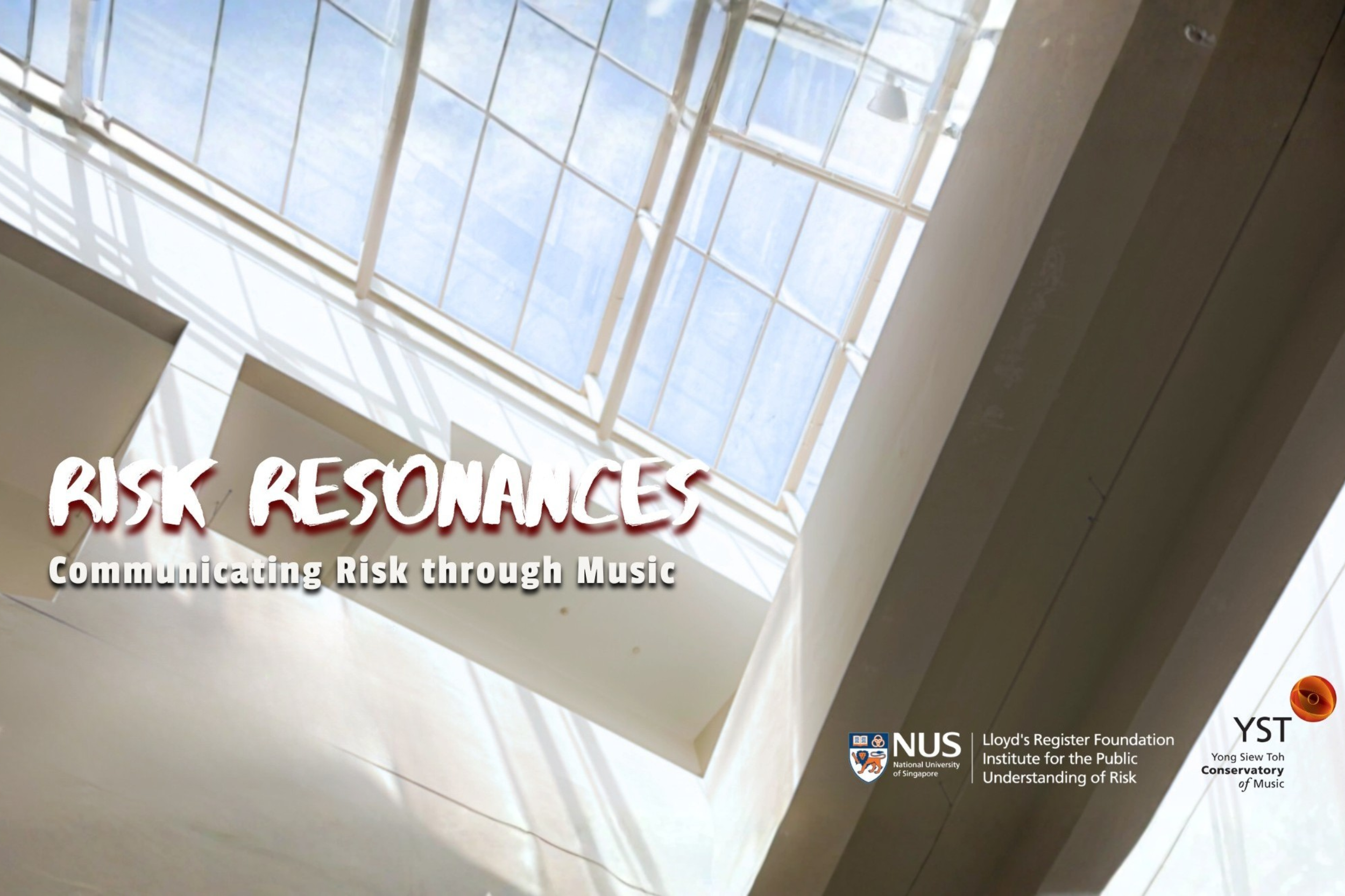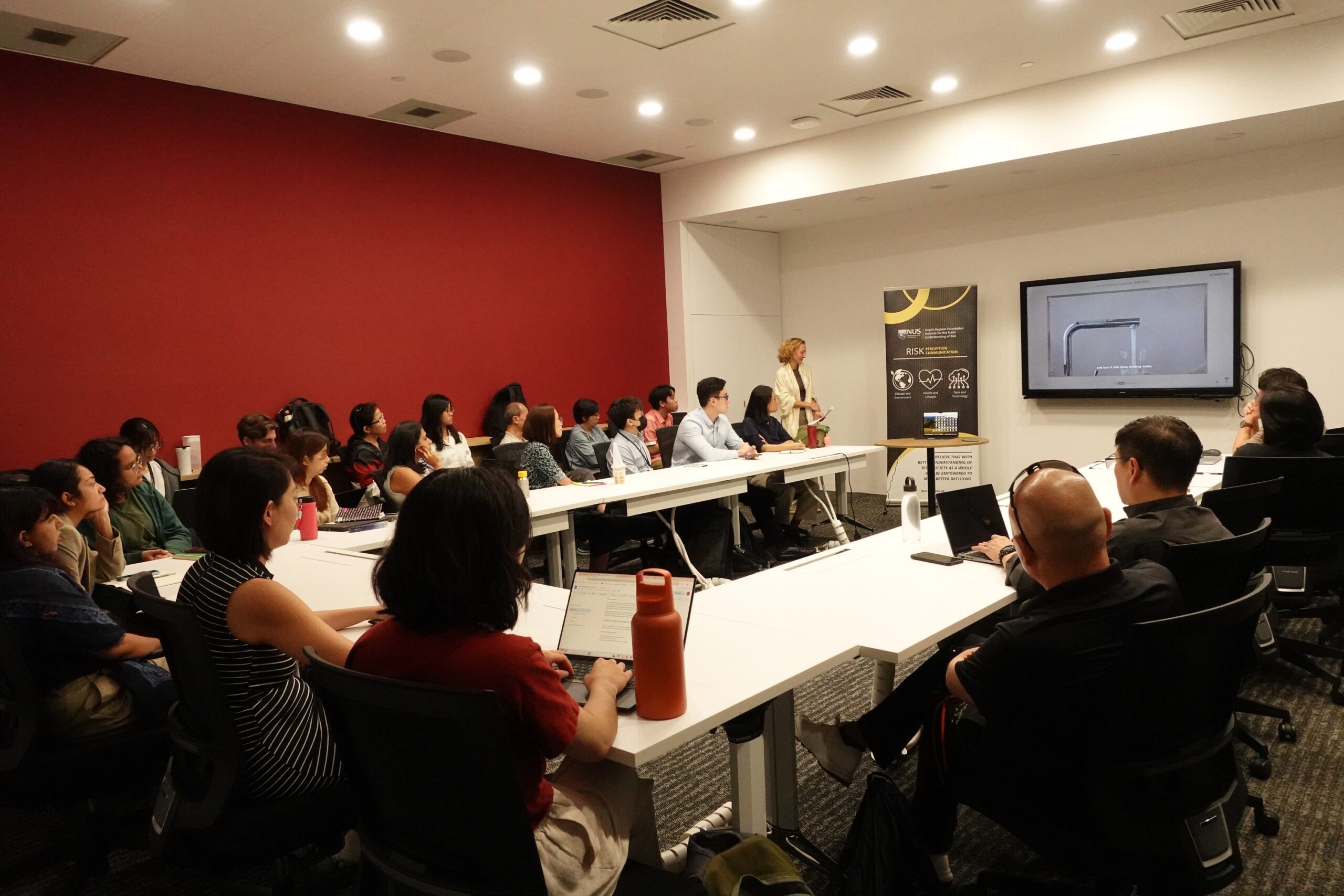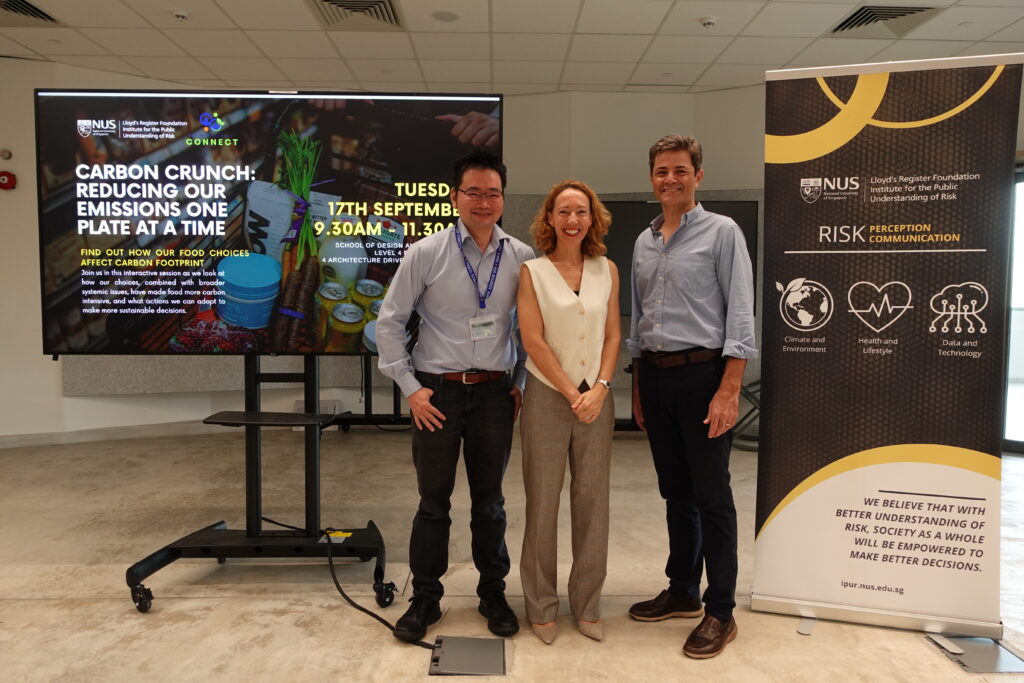
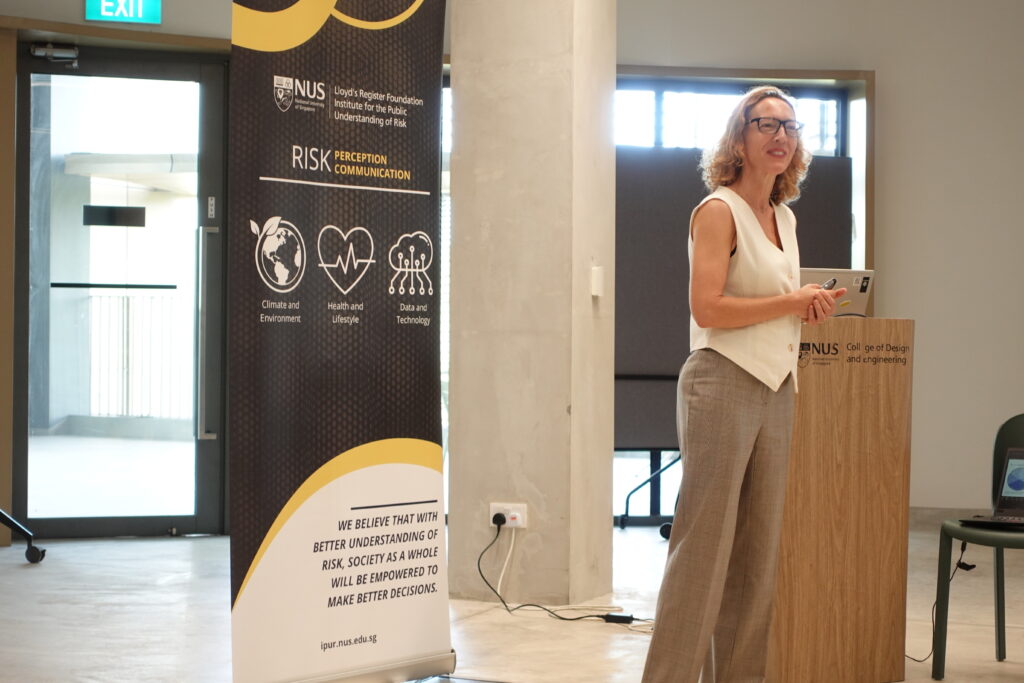
Did you know that consuming 1 kg of beef results in a staggering 30 kg of CO2e emissions? That’s like driving a petrol-powered car for over 100 km, but without even leaving your dining table! Beef, often referred to as “the edible version of coal,” has an extraordinarily high carbon footprint, making it one of the most environmentally damaging protein sources we consume.
This and other eye-opening facts about individual carbon emissions were presented by Associate Professor Alberto Salvo from the Department of Economics at NUS. Assoc Prof Salvo was speaking at IPUR’s “Carbon Crunch: Reducing your emissions one plate at a time” event on 17 September. The event was organised in conjunction with NUS Sustainability CONNECT, held from 14-21 September to celebrate the university’s sustainability efforts.
Besides highlighting the carbon intensity of certain lifestyle choices (an economy-class roundtrip from Singapore to London emits 3,000 kg CO2e!), Assoc Prof Salvo presented and discussed his experience educating students about the environmental impact of food choices, especially regarding protein, and how this subsequently opened up their perspectives and influenced their consumption choices. From beef to beans, the lifecycle emissions of various foods were also analysed, and participants of the event were encouraged to consider low-carbon substitutes like chicken and plant-based proteins.
Dr Olivia Jensen, IPUR Deputy Director and Lead Scientist, followed up Assoc Prof Salvo’s presentation by taking participants through a quick “tour” of Singapore’s food history where she discussed the shift in the country’s food landscape from the 1970s to 2020s. Back in the 1970s, Singapore was relatively self-sufficient, producing over 90% of its poultry and pork needs, along with significant portions of vegetables and fish. Local farms were the backbone of food production. Fast forward to today, Singapore imports more than 90% of its food from 183 countries. This transition has dramatically increased carbon emissions, as food is now transported over vast distances from countries like Brazil and Australia, with air-freighted goods having an especially high environmental cost.
One of the most eye-opening moments of the session was a comparison of the carbon intensity of iconic Singaporean dishes. For example, in the 1970s, a serving of chicken rice generated just 1.01 kg of CO2e, but by the 2020s, that number had more than tripled to 3.13 kg CO2e per serving. Similarly, laksa saw its carbon intensity soar from 1.37 kg to 6.53 kg CO2e, while a plate of chicken biryani went from 2.61 kg to 9.91 kg CO2e. These stark increases highlight how the shift toward processed foods, imported ingredients, and international flavours has significantly worsened the environmental impact of even our most beloved local meals.
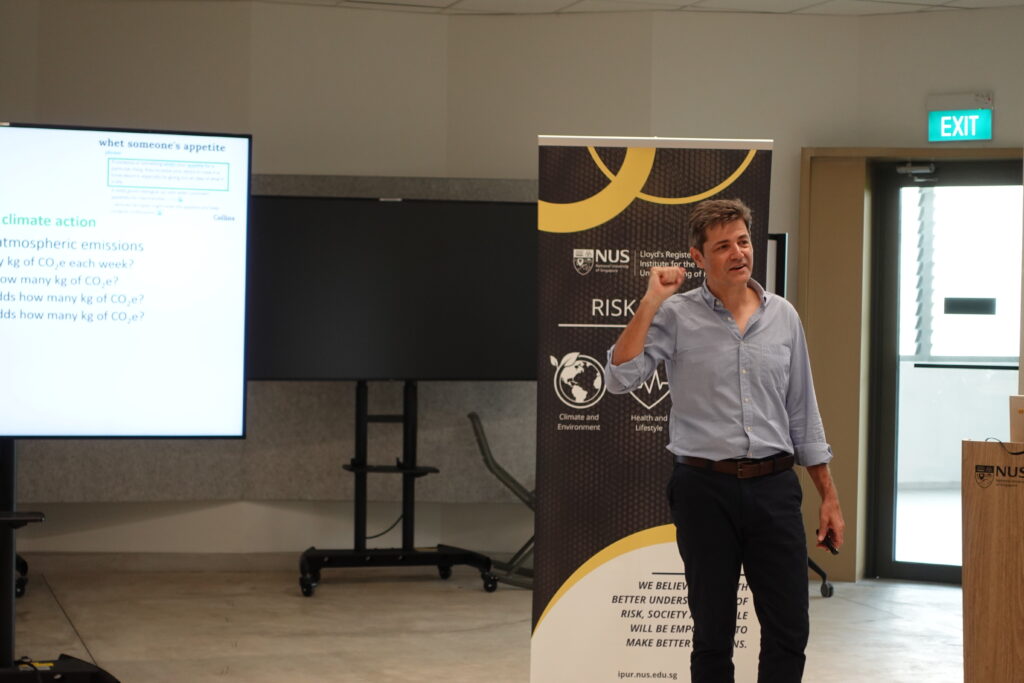
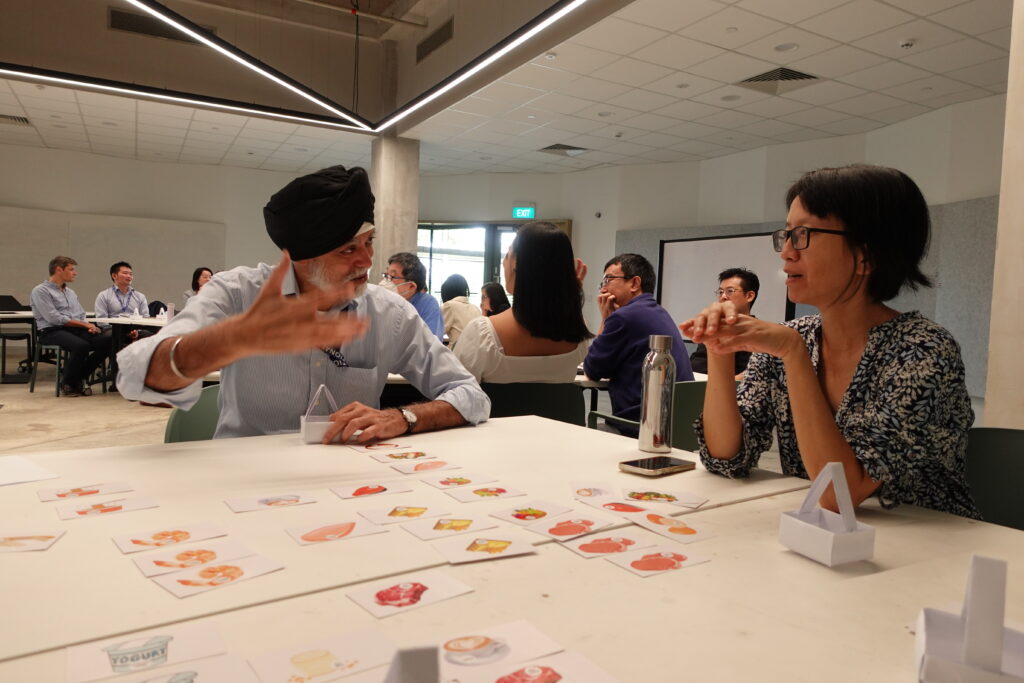
Beyond individual dishes, the event also emphasised the broader environmental impact of food production. Today, the global food system is responsible for approximately 25% of greenhouse gas emissions, occupying around 50% of the world’s habitable land. The growing demand for meat, especially beef, has led to deforestation, biodiversity loss, and heightened climate risks. Assoc Prof Salvo stressed the importance of transitioning to a more sustainable food system, much like how Singapore is attempting with energy. This shift, he emphasised, is not just about cutting carbon – it also has co-benefits for human health, animal welfare, and food security.
Rounding off the event was an interactive activity led by Mr Jared Ng (IPUR Communications Manager) which illustrated the consumption preferences of participants in order to raise awareness about the carbon footprint of common grocery items.
The calculations of carbon emissions of food items per serving was presented to participants (e.g., a 100g serving of chicken results in 0.4 kg CO2e). After which, they were invited to select mock food items to prepare a meal, with a carbon emission budget of 3kg CO2e. In their conversations about their food item choices, participants talked about their preferences and what stood out to them in terms of the carbon intensity of popular grocery items such as beef (2.4 kg CO2e for 100g) and pork (1.2 kg CO2e for 100g). They exchanged perspectives on what food options they could reduce to better manage their individual emissions and what strategies Singapore could adopt to empower citizens to take greater ownership – educating the younger generation in schools and introducing carbon footprint labels on popular grocery items.
The session left participants with a clear message: our food choices matter. While individual actions may seem small, they collectively have a significant impact. It signals to governments and firms that people want change. As Singaporeans’ diets evolve, so too must our awareness of the environmental costs of what we eat. By opting for more plant-based foods, sourcing sustainably, and reducing high-carbon foods like meat, we can all contribute to a more sustainable future.

